Shuojia Zou
TOD-CNN: An Effective Convolutional Neural Network for Tiny Object Detection in Sperm Videos
Apr 18, 2022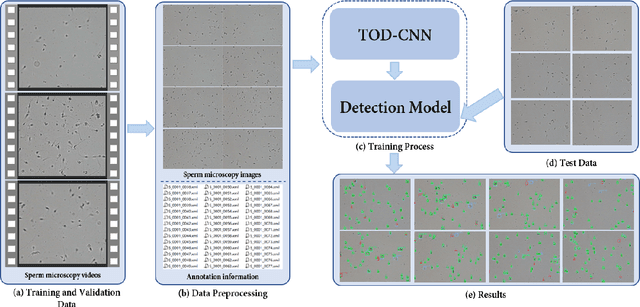


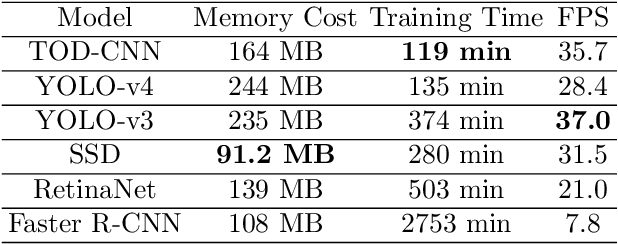
Abstract:The detection of tiny objects in microscopic videos is a problematic point, especially in large-scale experiments. For tiny objects (such as sperms) in microscopic videos, current detection methods face challenges in fuzzy, irregular, and precise positioning of objects. In contrast, we present a convolutional neural network for tiny object detection (TOD-CNN) with an underlying data set of high-quality sperm microscopic videos (111 videos, $>$ 278,000 annotated objects), and a graphical user interface (GUI) is designed to employ and test the proposed model effectively. TOD-CNN is highly accurate, achieving $85.60\%$ AP$_{50}$ in the task of real-time sperm detection in microscopic videos. To demonstrate the importance of sperm detection technology in sperm quality analysis, we carry out relevant sperm quality evaluation metrics and compare them with the diagnosis results from medical doctors.
A Survey of Semen Quality Evaluation in Microscopic Videos Using Computer Assisted Sperm Analysis
Feb 17, 2022
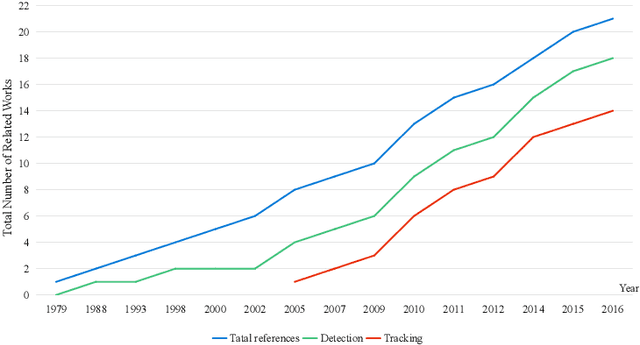
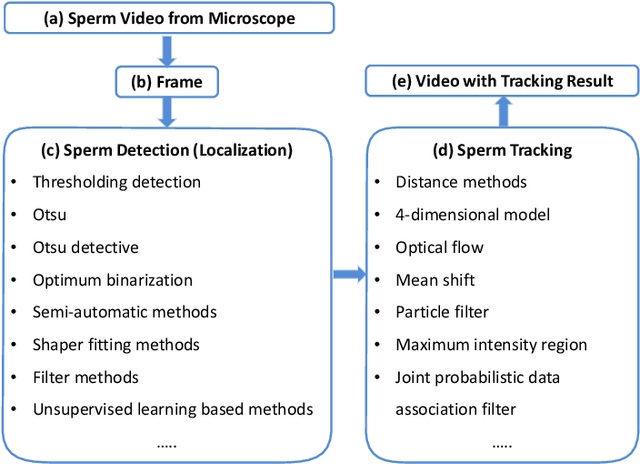
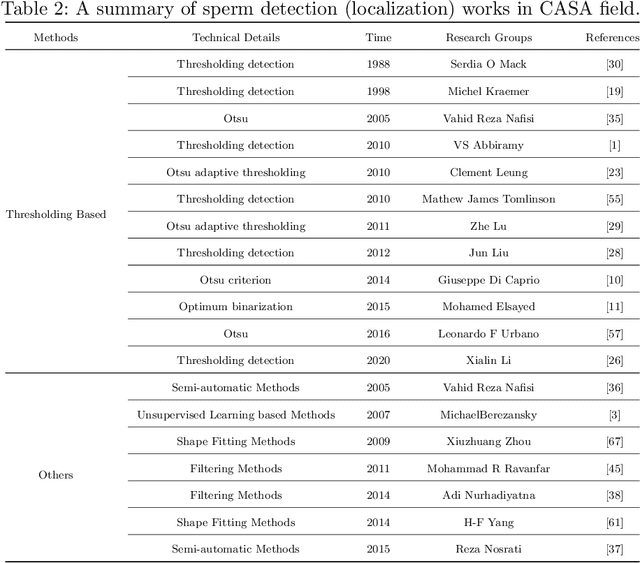
Abstract:The Computer Assisted Sperm Analysis (CASA) plays a crucial role in male reproductive health diagnosis and Infertility treatment. With the development of the computer industry in recent years, a great of accurate algorithms are proposed. With the assistance of those novel algorithms, it is possible for CASA to achieve a faster and higher quality result. Since image processing is the technical basis of CASA, including pre-processing,feature extraction, target detection and tracking, these methods are important technical steps in dealing with CASA. The various works related to Computer Assisted Sperm Analysis methods in the last 30 years (since 1988) are comprehensively introduced and analysed in this survey. To facilitate understanding, the methods involved are analysed in the sequence of general steps in sperm analysis. In other words, the methods related to sperm detection (localization) are first analysed, and then the methods of sperm tracking are analysed. Beside this, we analyse and prospect the present situation and future of CASA. According to our work, the feasible for applying in sperm microscopic video of methods mentioned in this review is explained. Moreover, existing challenges of object detection and tracking in microscope video are potential to be solved inspired by this survey.
A Comparison for Anti-noise Robustness of Deep Learning Classification Methods on a Tiny Object Image Dataset: from Convolutional Neural Network to Visual Transformer and Performer
Jun 09, 2021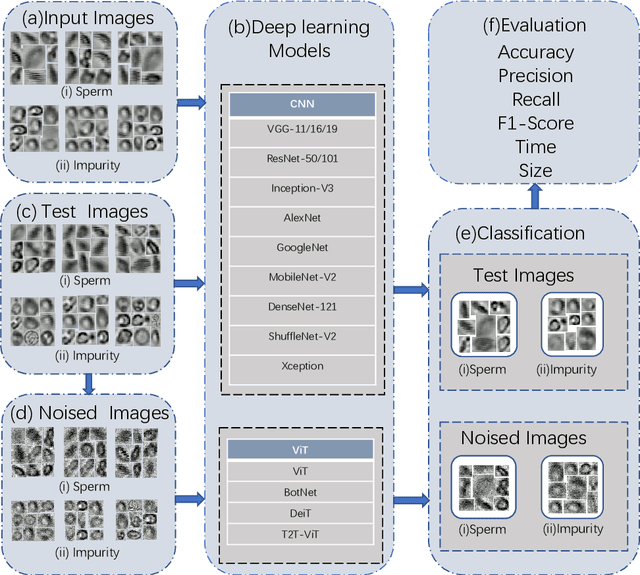
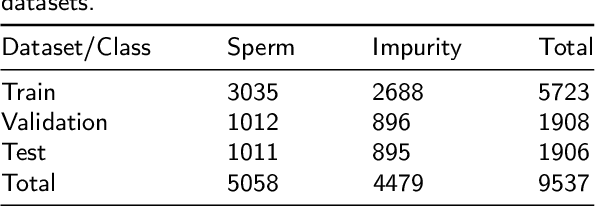
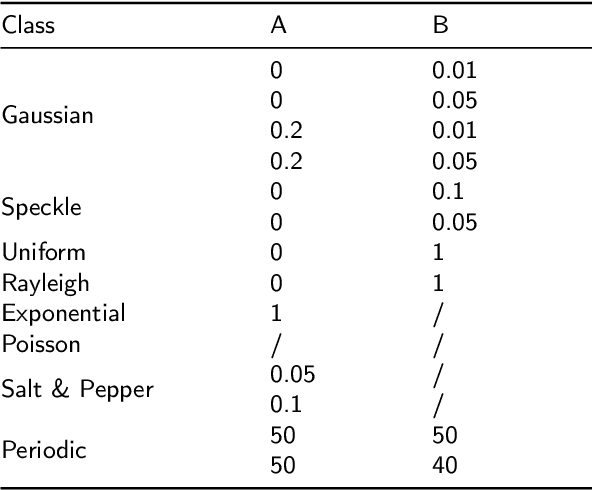
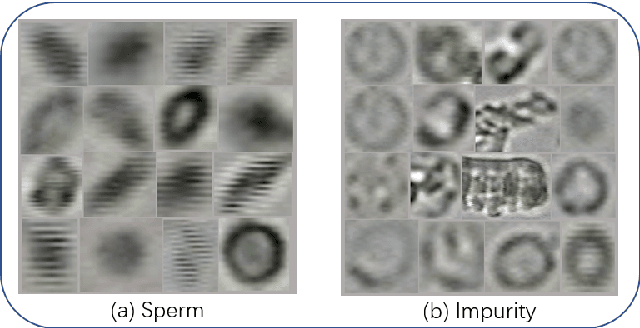
Abstract:Image classification has achieved unprecedented advance with the the rapid development of deep learning. However, the classification of tiny object images is still not well investigated. In this paper, we first briefly review the development of Convolutional Neural Network and Visual Transformer in deep learning, and introduce the sources and development of conventional noises and adversarial attacks. Then we use various models of Convolutional Neural Network and Visual Transformer to conduct a series of experiments on the image dataset of tiny objects (sperms and impurities), and compare various evaluation metrics in the experimental results to obtain a model with stable performance. Finally, we discuss the problems in the classification of tiny objects and make a prospect for the classification of tiny objects in the future.
A State-of-the-art Survey of Object Detection Techniques in Microorganism Image Analysis: from Traditional Image Processing and Classical Machine Learning to Current Deep Convolutional Neural Networks and Potential Visual Transformers
May 07, 2021



Abstract:Microorganisms play a vital role in human life. Therefore, microorganism detection is of great significance to human beings. However, the traditional manual microscopic detection methods have the disadvantages of long detection cycle, low detection accuracy in large orders, and great difficulty in detecting uncommon microorganisms. Therefore, it is meaningful to apply computer image analysis technology to the field of microorganism detection. Computer image analysis can realize high-precision and high-efficiency detection of microorganisms. In this review, first,we analyse the existing microorganism detection methods in chronological order, from traditional image processing and traditional machine learning to deep learning methods. Then, we analyze and summarize these existing methods and introduce some potential methods, including visual transformers. In the end, the future development direction and challenges of microorganism detection are discussed. In general, we have summarized 137 related technical papers from 1985 to the present. This review will help researchers have a more comprehensive understanding of the development process, research status, and future trends in the field of microorganism detection and provide a reference for researchers in other fields.
 Add to Chrome
Add to Chrome Add to Firefox
Add to Firefox Add to Edge
Add to Edge